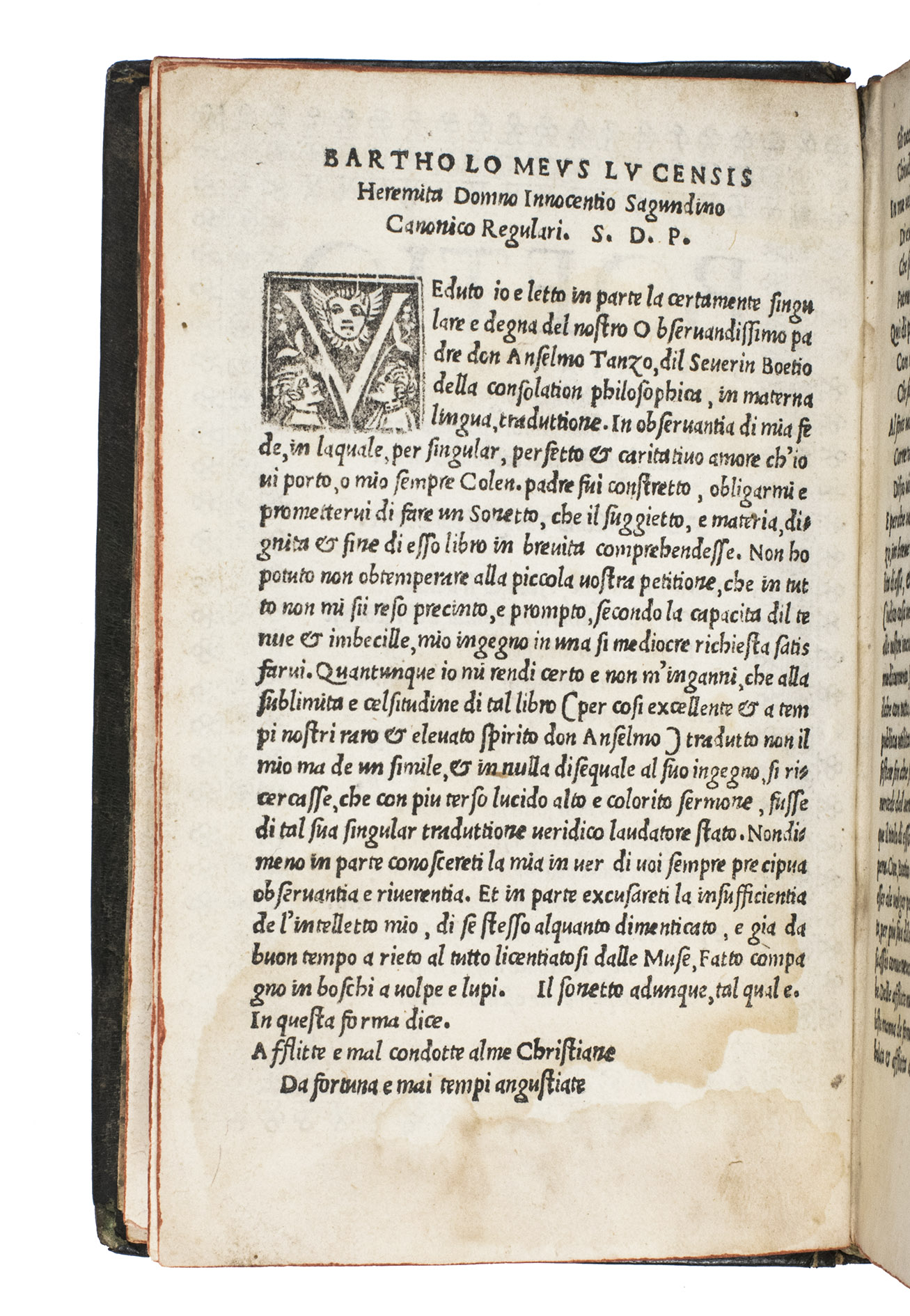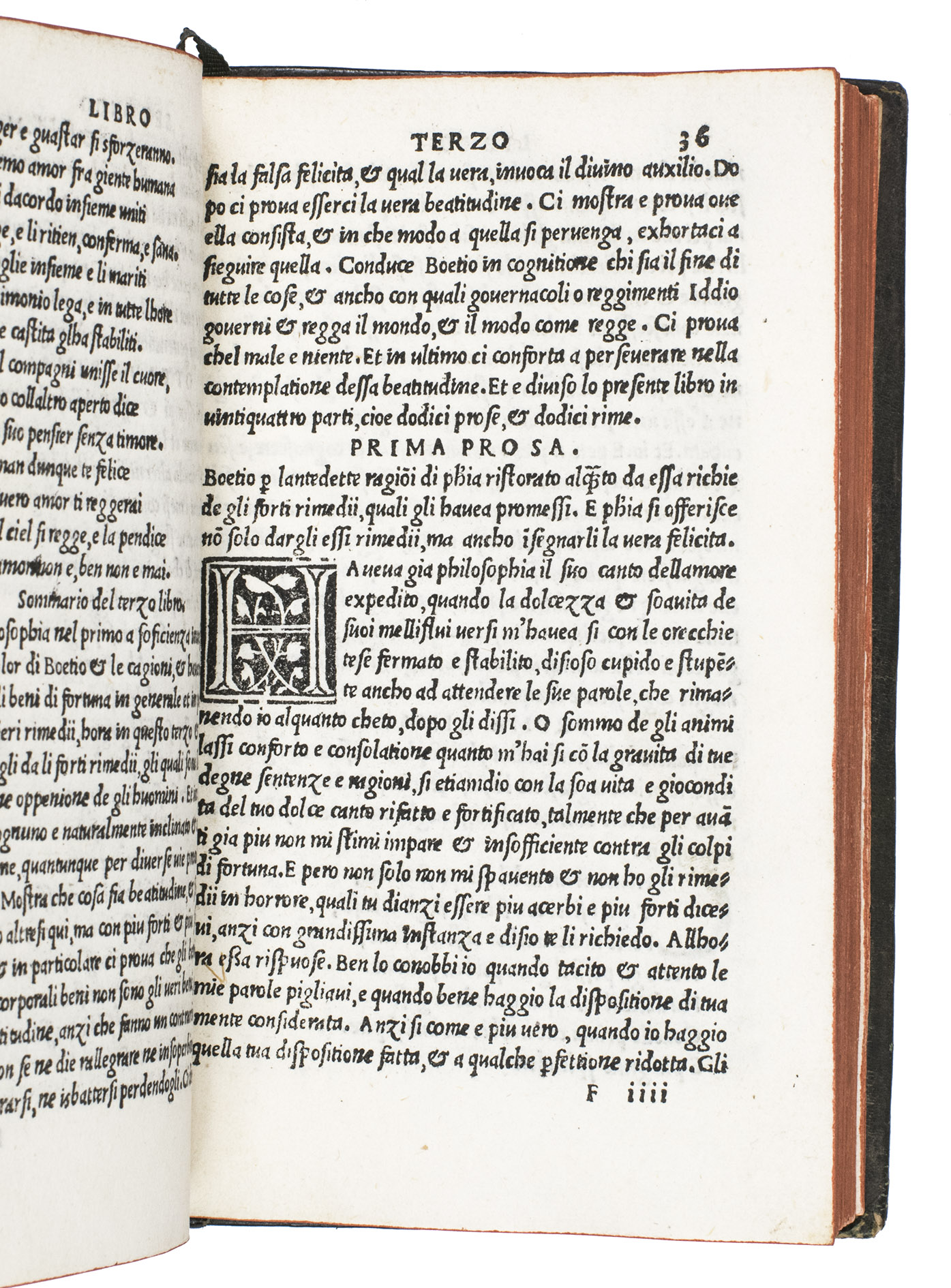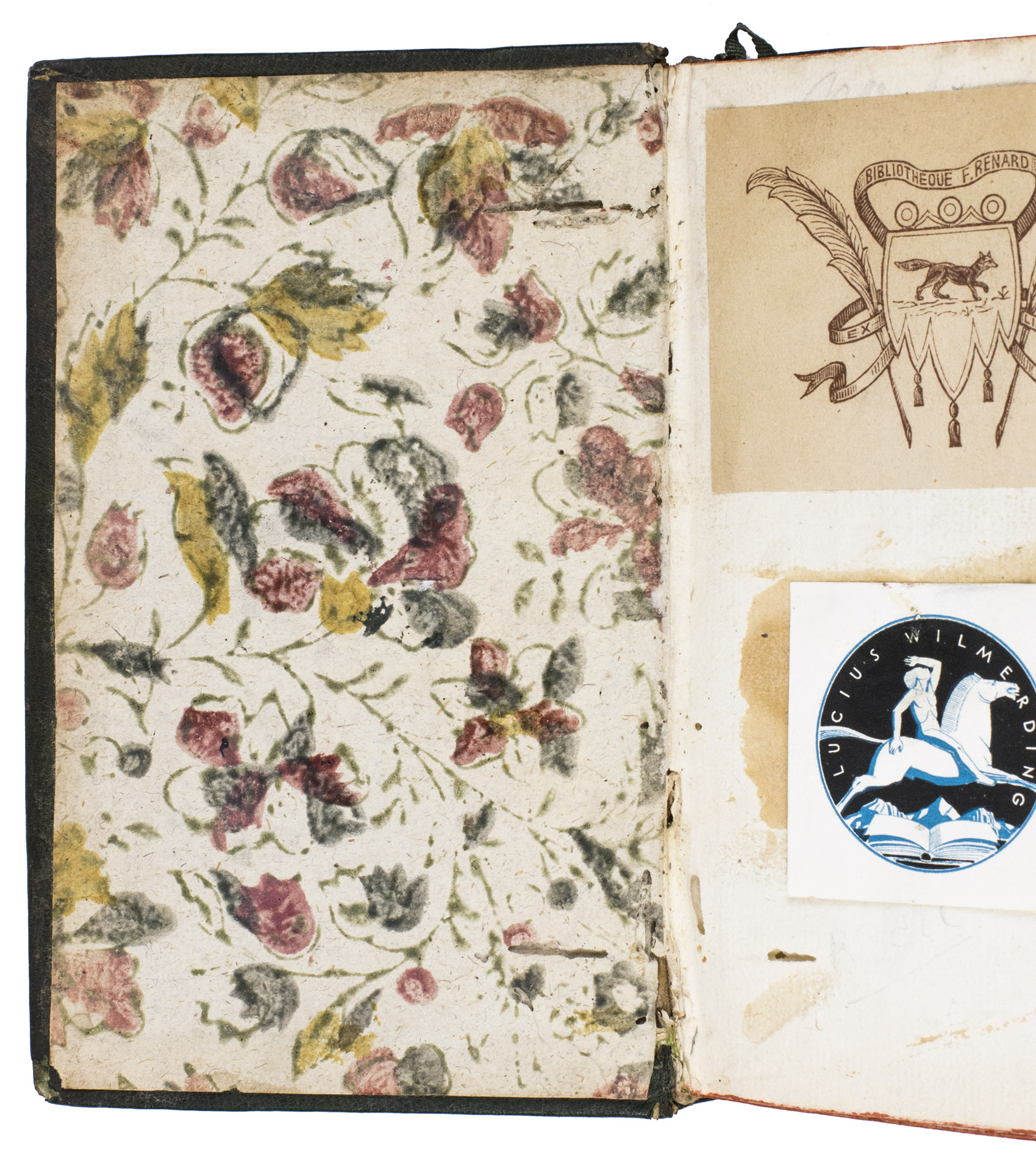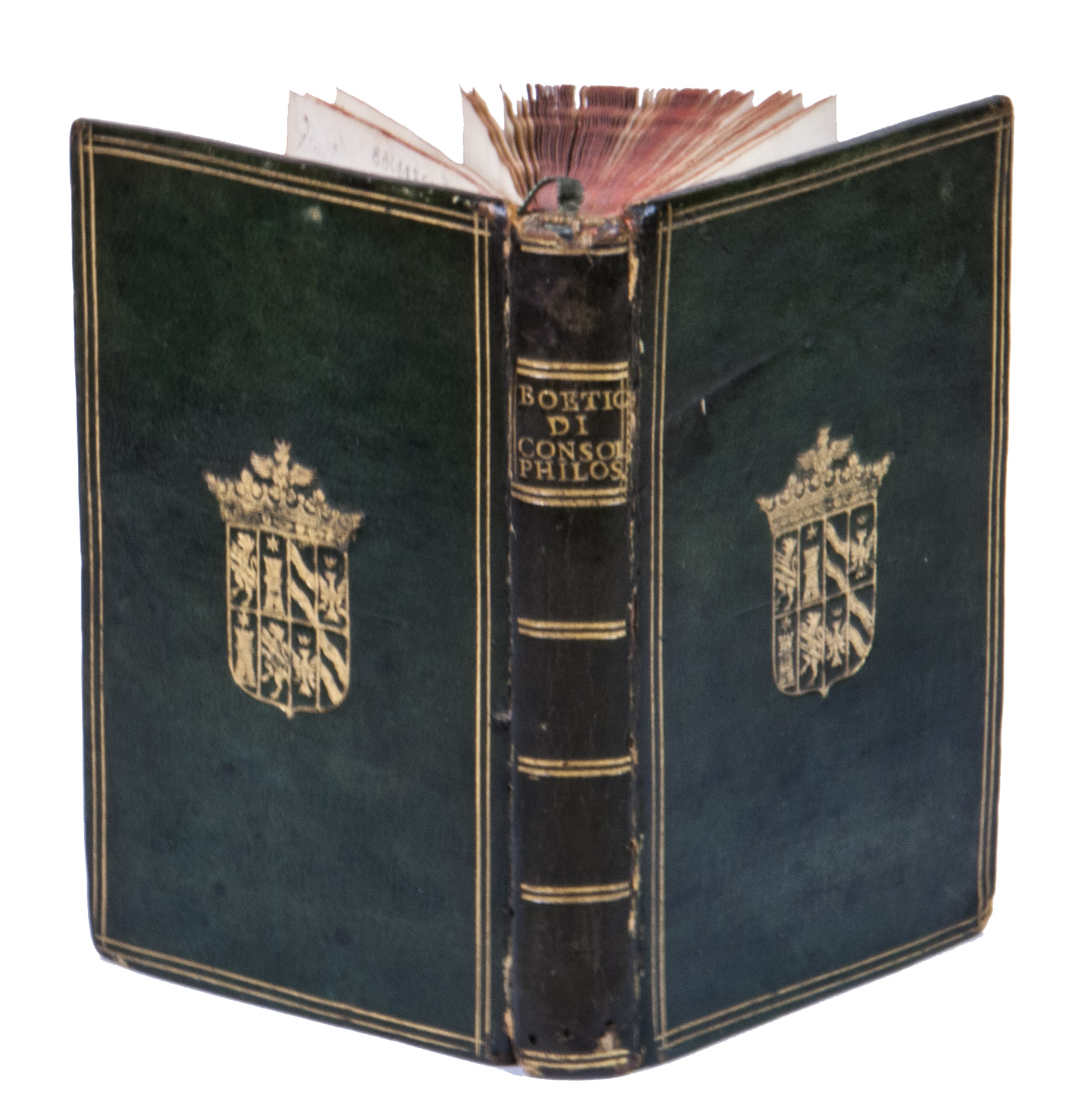BOETHIUS, Anicius Manlius.
Di consolatione philosophica volgare, nuovamente revisto & di molti errori porgato opera al tutto dignissima eccellente & bella.
(Colophon:) Venice, Melchior Sessa, December 1531. 8vo. With the title and leaf 1 printed within a border made up of typographical ornament, and 6 decorated woodcut initials, of which one historiated. 17th-century gold tooled green morocco. [8], 104 ll.
€ 3,750
First Italian translation of Boethius' (ca.480-ca.524), most important work, bound for a member of the House of Caetani (or Gaetani), an Italian noble family. Written in the form of a dialogue between the author and the female personification of philosophy, the work discusses the capriciousness of fortune, the influence of good and evil, and the nature of God's control over the universe. As it fit within Christian doctrine, it was approved by the Church, and became immensely influential throughout the Middle Ages. It was already translated into German, French, Italian, Spanish and Greek before the end of the fifteenth century.
The present work is the third Italian edition, but the first printed by Melchior Sessa. The translation as made by friar Anselmo Tanzo (dates unknown), a Canon Regular at Milan. The first edition was published in Milan by Agostino de Vicomercato for Bernardino Tanzo (a relative of Anselmo) in 1520; the second edition appeared also in Venice with Giovantinio & fratelli da Sabio in 1527. On the title of our edition (also present in the first and second editions) a sonnet by Anselmo Tanzo has been printed. On the verso of the title starts a letter of Bartholomeus Lucensis to the Canon regular Innocentius Sagundinus, dated 21 December 1515, followed on fol. A2verso by a letter of the translator to his brother Giovan Jacobo Tanzo.
Provenance: The work was bound for the Gaetani family in the 17th century, as it has their coat-of-arms on the boards. It then likely ended up in the possession of Nicola Fransesco Haym (1678-1729), an Italian librettist, as the the work contains an annotation by him. It was later sold to F. Renard, who is otherwise unknown, as his bookplate has been mounted in the beginning of the work. It was then sold to Lucius Wilmerding (1880-1949), the well-known American bibliophile and collector. His vast library, incorporating a large collection of Renaissance and other armorial and association bindings, was auctioned off in New York during 1950 and 1951.
With the bookplates of Lucius Wilmerding and F. Renard mounted on the first free endpaper, an annotation about the work by N.F. Haym on the first blank leaf. The edges and corners of the boards are slightly scuffed, the joints are somewhat rubbed. The first blank leaf is stained, the first ca. 35 leaves are lightly waterstained in upper corner. Joints trifle rubbed. Otherwise in good condition. Adams B-2297; Censimento B2695; Edit 16 CNCE 6555; Graesse I, p. 466; OPAC SBN LO1E007198 Paitoni I, p. 176; The notable library of the late Lucius Wilmerding (New York 1950-1), item 120; USTC 815080; not in STC Italian.
Related Subjects:








